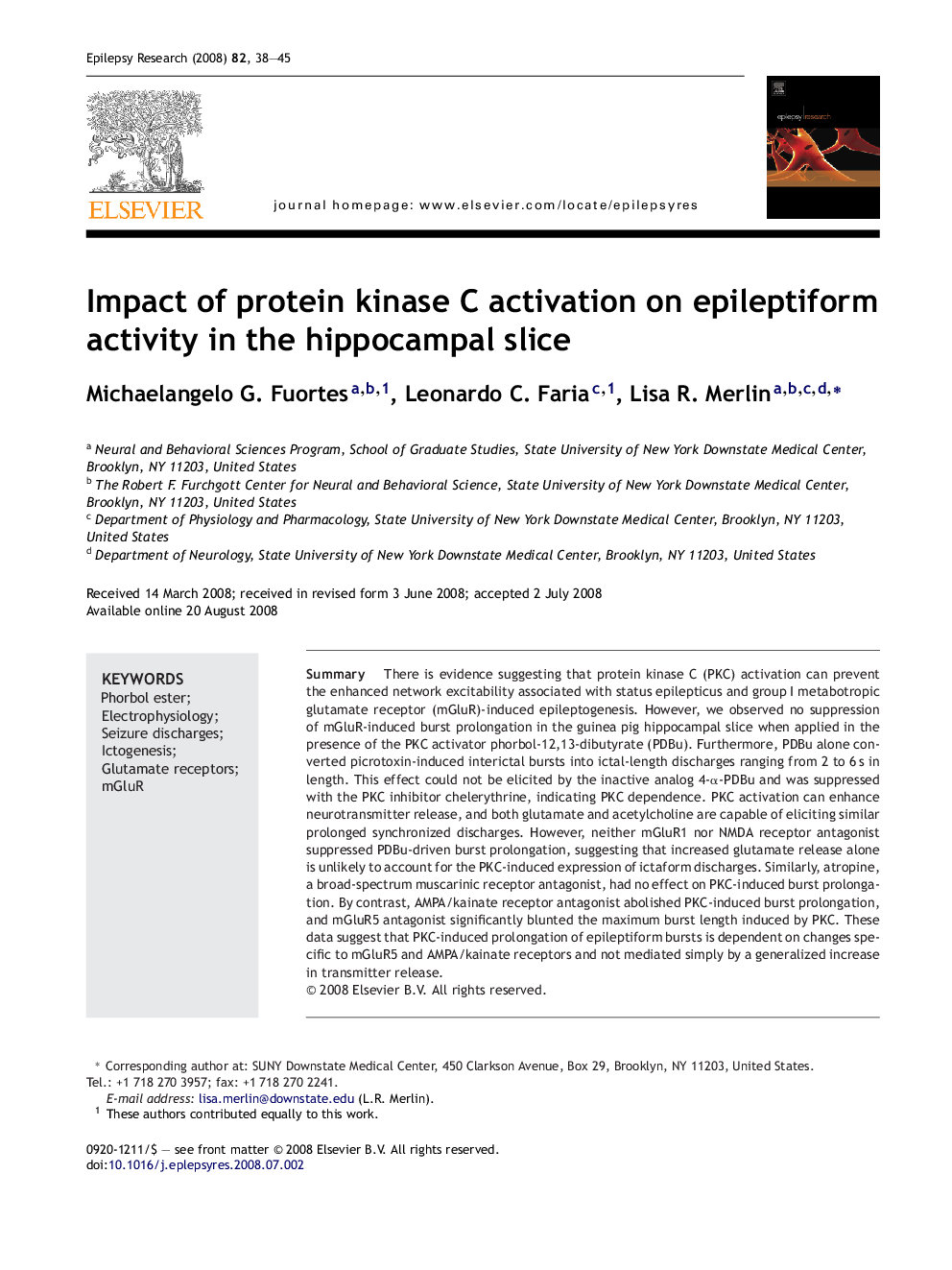| Article ID | Journal | Published Year | Pages | File Type |
|---|---|---|---|---|
| 3052922 | Epilepsy Research | 2008 | 8 Pages |
SummaryThere is evidence suggesting that protein kinase C (PKC) activation can prevent the enhanced network excitability associated with status epilepticus and group I metabotropic glutamate receptor (mGluR)-induced epileptogenesis. However, we observed no suppression of mGluR-induced burst prolongation in the guinea pig hippocampal slice when applied in the presence of the PKC activator phorbol-12,13-dibutyrate (PDBu). Furthermore, PDBu alone converted picrotoxin-induced interictal bursts into ictal-length discharges ranging from 2 to 6 s in length. This effect could not be elicited by the inactive analog 4-α-PDBu and was suppressed with the PKC inhibitor chelerythrine, indicating PKC dependence. PKC activation can enhance neurotransmitter release, and both glutamate and acetylcholine are capable of eliciting similar prolonged synchronized discharges. However, neither mGluR1 nor NMDA receptor antagonist suppressed PDBu-driven burst prolongation, suggesting that increased glutamate release alone is unlikely to account for the PKC-induced expression of ictaform discharges. Similarly, atropine, a broad-spectrum muscarinic receptor antagonist, had no effect on PKC-induced burst prolongation. By contrast, AMPA/kainate receptor antagonist abolished PKC-induced burst prolongation, and mGluR5 antagonist significantly blunted the maximum burst length induced by PKC. These data suggest that PKC-induced prolongation of epileptiform bursts is dependent on changes specific to mGluR5 and AMPA/kainate receptors and not mediated simply by a generalized increase in transmitter release.
